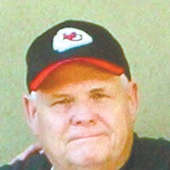A time of vision
One of my favorite pastimes is to look at old copies of the Daily Mail on Google News. One of my most enjoyed sections to review, is that of “Circling The Square,” the regular local news, views, and thoughts, of editor Peter V. McCoy. On Feb. 5, 1967, McCoy listed some information regarding the upcoming Bond Rally, for the prospective 3M Company.
Here are his comments: “YA’LL COME — tomorrow night there’s a big rally at the Nevada High School auditorium at which Nevada will display to the officials of the 3M Company that we are happy to have them in our community. A fine program is planned and the 3M officialdom will tell about their company and questions about the upcoming bond election will be answered. So for a good time and some first hand information, come to the big 3M rally tomorrow night … The shindig gets under way at 8 o’clock.”
My first thought after reading these sentences was to ask the question, has there ever been anyone who had their finger on the pulse of Nevada, more than Peter McCoy? His daily insights kept everyone informed, and his type of journalism should always be preserved.
My second thought was a realization of just how momentous that “YA’LL come,” rally truly was for our community. This was in a time when Nevada was in a state of transition, and the plans and resulting actions made back then reverberate still today.
On the same front page, there was an additional article about the rally. It named two very influential men who had worked very hard on the recruitment of 3M to Nevada, Barth Hinkle and Chester Barrett. They were just a couple from a group of visionary civic leaders of that period who looked toward a better future for Nevada.
Some background for the economic and social status of Nevada at that time is required. Nevada and Vernon County were dangerous places during the Civil War. Nevada was burned to the ground in 1864 by order of the Union Army and the county was basically cleared of all inhabitants.
From those dark historical days the town began to rise again. It was aided by several factors. First it was the county seat. The courthouse and the Square became a center of business and government activity.
Transportation was perhaps the most significant element for growth. Both the Missouri Pacific and Katy Railroad lines passed through Nevada and there were several large buildings and repair facilities located here. Passenger traffic was available on both lines. U.S. Highways 71 and 54 both intersected in Nevada too. This along with the railroads made Nevada a crossroads in western Missouri.
In the late 1880s, Nevada was selected to receive the State Mental Hospital No. 3. This would prove to become for decades the largest employer in the area. Camp Clark, the National Guard facility, was established in 1908 and has been a vital part of our landscape ever since. It housed large numbers of POWs during World War II. Several local businesses such as Norman Sheet Metal also flourished in Nevada as employers.
By the mid 1960s, local leaders began to see changes coming and that was when they began to search for new economic input for employment. Over the next four decades the State Hospital would decline from a high point of around 2,000 patients and 1,400 full-time employees to the point it has become today. The railroads did away with passenger service in the late 1950s and more and more freight was now delivered by truck. Many more jobs were lost from that decline.
These visionary men of the last century began to search for options. 3M was not the only manufacturing corporation they sought to entice. Crane Plumbing and Fram also were encouraged to move new facilities to Nevada. I do not have the actual facts and figures in hand to show you the bond type of investments that the community offered these businesses. What I do know is that Nevada and her volunteer leaders made a supreme effort to facilitate these moves to Nevada.
We are now some five decades later and of those three major plants only 3M remains. (A former NHS graduate, Ken Loomer, rescued the former Fram factory building where he located his own private company — Precision Aero Services Inc.) He was assisted in this process by another visionary citizen, Sam Foursha. For a time, Sam worked tirelessly in a position that was much like that of those men from 50 years ago.
One of the aspects of vision for the future is to understand that what worked in the past is not always a recipe for the future. Nevada has changed and so have its economic needs and prospects.
One thing I have heard over and over of late is the remark by business owners that they are having more and more difficulty finding good and reliable help. There are so many reasons for this that it would take more than one article to cover all those cause and affect assertions.
If Nevada is to move forward into this 21st century it must have new men and women of vision to look toward that future. They must assess the many changes in our community and seek the next life altering entity that will come to our town.
Invites will not be enough in and of themselves. The town must show several positive points in these offerings. A stable well-educated and vocationally trained work force heads that list. We must have stable foundations in areas such as our local hospital, fire protection, good water availability and perhaps most importantly, a safe environment free from crime and drug abuse.
None of this will be easy and it will take lay citizens not just government officials to get the ball rolling so that a new “Circling the Square” segment will again be able to report another new YA’LL COME!

